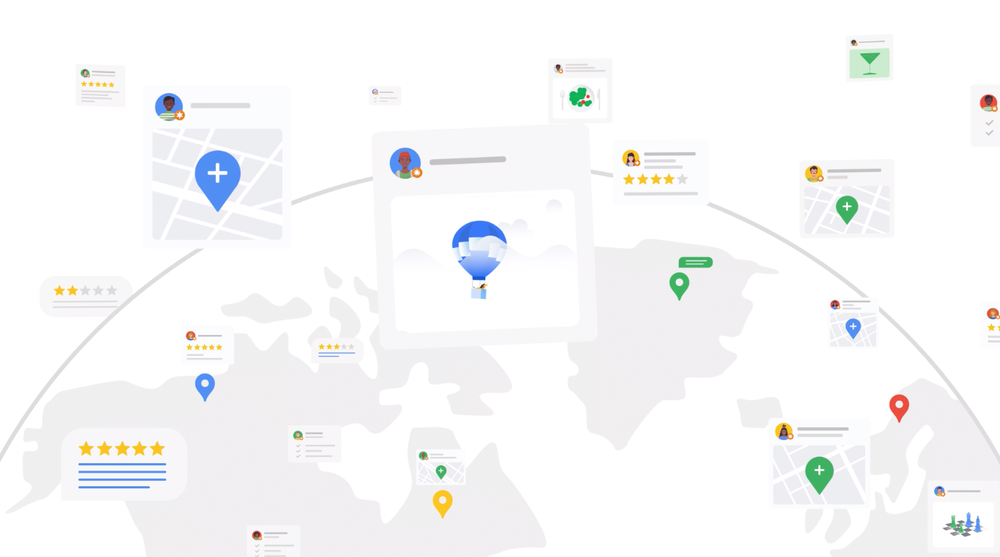Tag: Maps 101
How machine learning keeps contributed content helpful
by Dan Pritchett on Feb.13, 2024, under 3D Models, Argentina, Australia, Brazil, California, Denmark, England, Germany, Google Earth News, Google Earth Tips, Google Sky, Google maps, Hawaii, Indonesia, Ireland, Italy, Japan, Kenya, Mexico, Natural Landmarks, Netherlands, Sightseeing, Street Views, USA
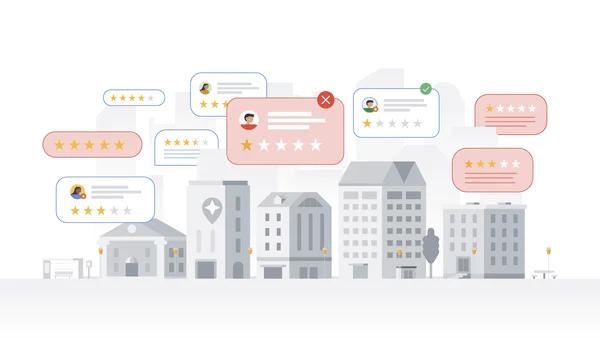 Learn about our 2023 progress to keep contributed content helpful, including a new machine learning algorithm that catches more fake reviews.
Learn about our 2023 progress to keep contributed content helpful, including a new machine learning algorithm that catches more fake reviews.How Google Maps protects against fake content
by Christina Wichiencharoen on Nov.23, 2023, under 3D Models, Argentina, Australia, Brazil, California, Denmark, England, Germany, Google Earth News, Google Earth Tips, Google Sky, Google maps, Hawaii, Indonesia, Ireland, Italy, Japan, Kenya, Mexico, Natural Landmarks, Netherlands, Sightseeing, Street Views, USA
 Here are three ways we stop policy-violating content from being submitted to Google Maps.
Here are three ways we stop policy-violating content from being submitted to Google Maps.How we built Immersive View for routes on Maps
by Daniel Filip on Nov.03, 2023, under 3D Models, Argentina, Australia, Brazil, California, Denmark, England, Germany, Google Earth News, Google Earth Tips, Google Sky, Google maps, Hawaii, Indonesia, Ireland, Italy, Japan, Kenya, Mexico, Natural Landmarks, Netherlands, Sightseeing, Street Views, USA
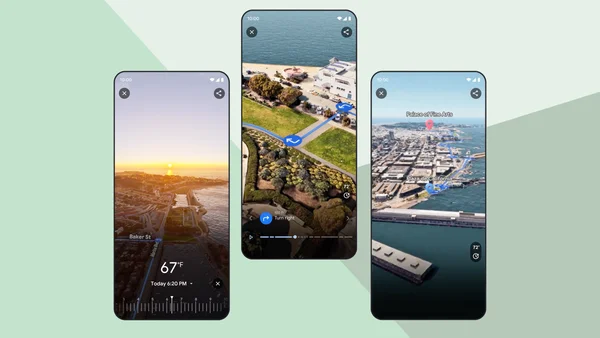 A deep drive into how AI and imagery help us build the 3D world of Immersive View.
A deep drive into how AI and imagery help us build the 3D world of Immersive View.How AI and imagery keep speed limits on Google Maps updated
by Siddharth Shashidharan on Oct.16, 2023, under 3D Models, Argentina, Australia, Brazil, California, Denmark, England, Germany, Google Earth News, Google Earth Tips, Google Sky, Google maps, Hawaii, Indonesia, Ireland, Italy, Japan, Kenya, Mexico, Natural Landmarks, Netherlands, Sightseeing, Street Views, USA
 Learn how we use AI and imagery to identify speed limits, and how we use speed limit information to build more helpful products.
Learn how we use AI and imagery to identify speed limits, and how we use speed limit information to build more helpful products.New ways we tackle fake contributions on Google Maps
by Ashish Gupta on Mar.31, 2023, under 3D Models, Argentina, Australia, Brazil, California, Denmark, England, Germany, Google Earth News, Google Earth Tips, Google Sky, Google maps, Hawaii, Indonesia, Ireland, Italy, Japan, Kenya, Mexico, Natural Landmarks, Netherlands, Sightseeing, Street Views, USA
 Google Maps prioritized fighting fake contributions and used a variety of techniques including ML to combat policy-violating content.
Google Maps prioritized fighting fake contributions and used a variety of techniques including ML to combat policy-violating content.How AI and imagery build a self-updating map
by Liam Bolling on Apr.08, 2022, under 3D Models, Argentina, Australia, Brazil, California, Denmark, England, Germany, Google Earth News, Google Earth Tips, Google Sky, Google maps, Hawaii, Indonesia, Ireland, Italy, Japan, Kenya, Mexico, Natural Landmarks, Netherlands, Sightseeing, Street Views, USA
Building a map is complex, and keeping it up-to-date is even more challenging. Think about how often your city, town or neighborhood changes on a day-to-day basis. Businesses and shops open and close, stretches of highway are added, and roadways change. In today’s Maps 101 installment, we’ll dive into two ways Google Maps uses advancements in AI and imagery to help you see the latest information about the world around you every single day.
Automatically updating business hours
Over the past few years, businesses have experienced a lot of change — including constantly updating operating hours based on changing pandemic-related restrictions. To keep up with this pace of change, we developed a machine learning model that automatically identifies if business hours are likely wrong, then instantly updates them with AI-generated predictions.
Let’s look at Liam’s Lemonade Shop as an example. To start, our systems consider multiple factors — such as when Liam last updated their business profile, what we know about other shops' hours, and the Popular Times information for the shop, which uses location trends to show when it tends to be busiest. Since it appears that Liam’s business profile hasn’t been updated in over a year and its busiest hours are typically Thursday afternoons — even though Google Maps says that it's closed at that time — Liam’s business hours are likely out of date.
So what’s next? Our algorithms analyze the business hours of other nearby lemonade shops, information from Liam’s website, and Street View images of Liam’s storefront that look specifically for business hour signs to determine the most accurate business hour prediction. At the same time, we enlist the help of the Google Maps community — including Local Guides and even the business owners themselves through their Google Business Profile — to verify the information we predicted. In Argentina, Australia, Chile, France, Japan, Mexico, New Zealand, Peru, and the United States, we also use Duplex conversational technology to call businesses just like Liam’s and ask for their hours directly. With this new AI-first approach, we’re on track to update the hours for over 20 million businesses around the globe in the next six months - helping you know exactly when your favorite store, restaurant or cafe is open for business .
Road information that reflects the real world
We’re also experimenting with ways we can use imagery to make updates to other helpful information. For instance, starting in the U.S., we’re launching a third-party imagery pilot to let you see the most up-to-date speed limit information in your town, which can help keep you safe while driving. Here’s how it works:
Say our systems think that the speed limit information on a particular highway needs to be updated. With the help of third-party imagery partners that already gather roadway imagery to improve delivery routes, we can request a photo of the specific stretch of road that also includes a speed limit sign. If the partner has this photo available, we then use a combination of AI and help from our operations team to identify the sign in the image, extract the new speed limit information, and update Google Maps.
Over time, this technology will bring more details to the map that can help make your drives safer and more efficient — like where potholes and school zones are or where new construction is happening. And as with all Google Maps features, we designed this pilot with privacy top of mind. For instance, we only reference images taken on public roads, and partners are required to blur information (like faces and license plates) to avoid potentially identifying someone. For an extra layer of privacy, we blur the photo again when we receive it and delete the photo after we use it to update the map.
AI, imagery and Duplex technology will continue to play a critical role in helping make Google Maps the most comprehensive and useful map possible. For more behind-the-scenes looks at the technology that powers Google Maps, check out the rest of our Maps 101 blog series.
How reviews on Google Maps work
by Ian Leader on Feb.02, 2022, under 3D Models, Argentina, Australia, Brazil, California, Denmark, England, Germany, Google Earth News, Google Earth Tips, Google Sky, Google maps, Hawaii, Indonesia, Ireland, Italy, Japan, Kenya, Mexico, Natural Landmarks, Netherlands, Sightseeing, Street Views, USA
When exploring new places, reviews on Google are a treasure trove of local knowledge that can point you to the places and businesses you’ll enjoy most — whether it’s a bakery with the best gluten-free cupcake or a nearby restaurant with live music.
With millions of reviews posted every day from people around the world, we have around-the-clock support to keep the information on Google relevant and accurate. Much of our work to prevent inappropriate content is done behind the scenes, so we wanted to shed some light on what happens after you hit “post” on a review.
How we create and enforce our policies
We’ve created strict content policies to make sure reviews are based on real-world experiences and to keep irrelevant and offensive comments off of Google Business Profiles.
As the world evolves, so do our policies and protections. This helps us guard places and businesses from violative and off-topic content when there’s potential for them to be targeted for abuse. For instance, when governments and businesses started requiring proof of COVID-19 vaccine before entering certain places, we put extra protections in place to remove Google reviews that criticize a business for its health and safety policies or for complying with a vaccine mandate.
Once a policy is written, it’s turned into training material — both for our operators and machine learning algorithms — to help our teams catch policy-violating content and ultimately keep Google reviews helpful and authentic.
Moderating reviews with the help of machine learning
As soon as someone posts a review, we send it to our moderation system to make sure the review doesn’t violate any of our policies. You can think of our moderation system as a security guard that stops unauthorized people from getting into a building — but instead, our team is stopping bad content from being posted on Google.
Given the volume of reviews we regularly receive, we’ve found that we need both the nuanced understanding that humans offer and the scale that machines provide to help us moderate contributed content. They have different strengths so we continue to invest tremendously in both.
Machines are our first line of defense because they’re good at identifying patterns. These patterns often immediately help our machines determine if the content is legitimate, and the vast majority of fake and fraudulent content is removed before anyone actually sees it.
Our machines look at reviews from multiple angles, such as:
- The content of the review: Does it contain offensive or off-topic content?
- The account that left the review: Does the Google account have any history of suspicious behavior?
- The place itself: Has there been uncharacteristic activity — such as an abundance of reviews over a short period of time? Has it recently gotten attention in the news or on social media that would motivate people to leave fraudulent reviews?
Training a machine on the difference between acceptable and policy-violating content is a delicate balance. For example, sometimes the word “gay” is used as a derogatory term, and that’s not something we tolerate in Google reviews. But if we teach our machine learning models that it’s only used in hate speech, we might erroneously remove reviews that promote a gay business owner or an LGBTQ+ safe space. Our human operators regularly run quality tests and complete additional training to remove bias from the machine learning models. By thoroughly training our models on all the ways certain words or phrases are used, we improve our ability to catch policy-violating content and reduce the chance of inadvertently blocking legitimate reviews from going live.
If our systems detect no policy violations, then the review can post within a matter of seconds. But our job doesn’t stop once a review goes live. Our systems continue to analyze the contributed content and watch for questionable patterns. These patterns can be anything from a group of people leaving reviews on the same cluster of Business Profiles to a business or place receiving an unusually high number of 1 or 5-star reviews over a short period of time.
Keeping reviews authentic and reliable
Like any platform that welcomes contributions from users, we also have to stay vigilant in our efforts to prevent fraud and abuse from appearing on Maps. Part of that is making it easy for people using Google Maps to flag any policy-violating reviews. If you think you see a policy-violating review on Google, we encourage you to report it to our team. Businesses can report reviews on their profiles here, and consumers can report them here.
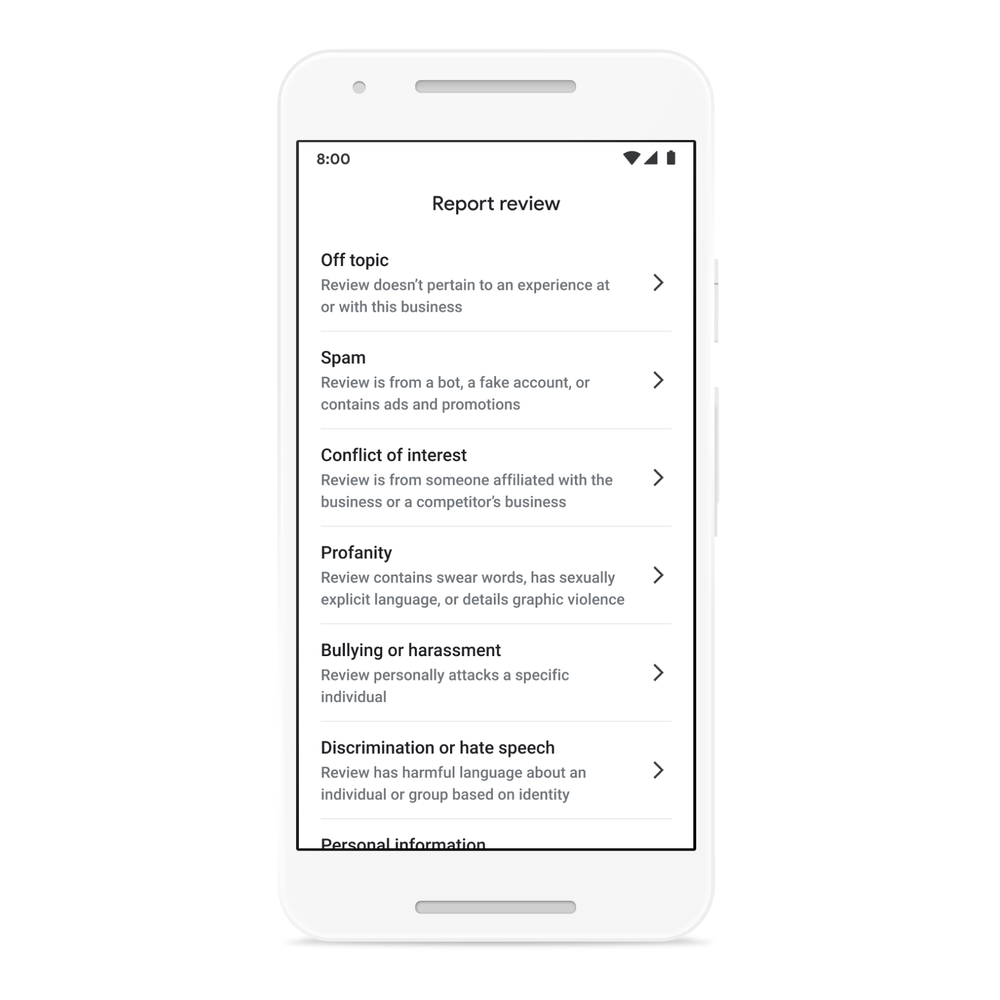
Google Maps users and businesses can easily report reviews that they feel violate one of our policies.
Our team of human operators works around the clock to review flagged content. When we find reviews that violate our policies, we remove them from Google and, in some cases, suspend the user account or even pursue litigation.
In addition to reviewing flagged content, our team proactively works to identify potential abuse risks, which reduces the likelihood of successful abuse attacks. For instance, when there’s an upcoming event with a significant following — such as an election — we implement elevated protections to the places associated with the event and other nearby businesses that people might look for on Maps. We continue to monitor these places and businesses until the risk of abuse has subsided to support our mission of only publishing authentic and reliable reviews. Our investment in analyzing and understanding how contributed content can be abused has been critical in keeping us one step ahead of bad actors.
With more than 1 billion people turning to Google Maps every month to navigate and explore, we want to make sure the information they see — especially reviews — is reliable for everyone. Our work is never done; we’re constantly improving our system and working hard to keep abuse, including fake reviews, off of the map.
A smoother ride and a more detailed Map thanks to AI
by Russell Dicker on May.19, 2021, under 3D Models, Argentina, Australia, Brazil, California, Denmark, England, Germany, Google Earth News, Google Earth Tips, Google Sky, Google maps, Hawaii, Indonesia, Ireland, Italy, Japan, Kenya, Mexico, Natural Landmarks, Netherlands, Sightseeing, Street Views, USA
AI is a critical part of what makes Google Maps so helpful. With it, we’re able to map roads over 10 times faster than we could five years ago, and we can bring maps filled with useful information to virtually every corner of the world. Today, we’re giving you a behind-the-scenes look at how AI makes two of the features we announced at I/O possible.
Teaching Maps to identify and forecast when people are hitting the brakes
Let’s start with our routing update that helps you avoid situations that cause you to slam on the brakes, such as confusing lane changes or freeway exits. We use AI and navigation information to identify hard-braking events — moments that cause drivers to decelerate sharply and are known indicators of car crash likelihood — and then suggest alternate routes when available. We believe these updates have the potential to eliminate over 100 million hard-braking events in routes driven with Google Maps each year. But how exactly do we find when and where these moments are likely to occur?
That’s where AI comes in. To do this, we train our machine learning models on two sets of data. The first set of information comes from phones using Google Maps. Mobile phone sensors can determine deceleration along a route, but this data is highly prone to false alarms because your phone can move independently of your car. This is what makes it hard for our systems to decipher you tossing your phone into the cupholder or accidentally dropping it on the floor from an actual hard-braking moment. To combat this, we also use information from routes driven with Google Maps when it's projected on a car’s display, like Android Auto. This represents a relatively small subset of data, but it’s highly accurate because Maps is now tethered to a stable spot — your car display. Training our models on both sets of data makes it possible to spot actual deceleration moments from fake ones, making detection across all trips more accurate.
Understanding spots along a route that are likely to cause hard-braking is just one part of the equation. We’re also working to identify other contextual factors that lead to hard-braking events, like construction or visibility conditions. For example, if there’s a sudden increase in hard-braking events along a route during a certain time of day when people are likely to be driving toward the glare of the sun, our system could detect those events and offer alternate routes. These details inform future routing so we can suggest safer, smoother routes.
Using AI to go beyond driving
When you’re walking or biking or taking public transit, AI is also there helping you move along safely and easily. Last August we launched detailed street maps which show accurate road widths, along with details about where the sidewalks, crosswalks and pedestrian islands are in an area so people can better understand its layout and how to navigate it. Today, we announced that detailed street maps will expand to 50 more cities by the end of 2021. While this sounds straightforward, a lot is going on under the hood — especially with AI — to make this possible!
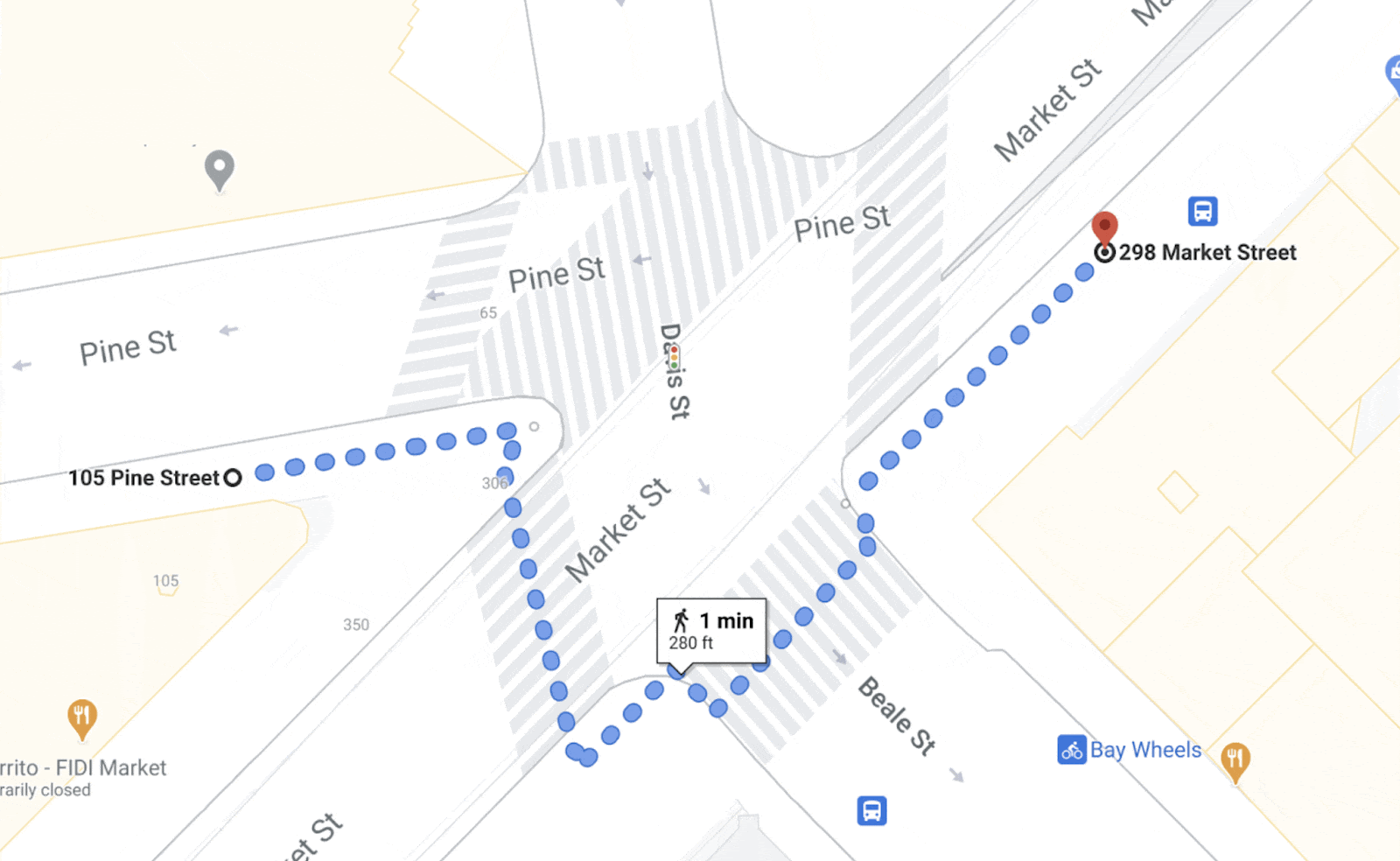
A before and after comparison of detailed streets maps built from satellite imagery
Imagine that you’re taking a stroll down a typical San Francisco street. As you approach the intersection, you’ll notice that the crosswalk uses a “zebra” pattern — vertical stripes that show you where to walk. But if you were in another city, say London, then parallel dotted lines would define the crosswalks. To account for these differences and accurately display them on the map, our systems need to know what crosswalks look like — not just in one city but across the entire world. It gets even trickier since urban design can change at the country, state, and even city level.
To expand globally and account for local differences, we needed to completely revamp our mapmaking process. Traditionally, we’ve approached mapmaking like baking a cake — one layer at a time. We trained machine learning models to identify and classify features one by one across our index of millions of Street View, satellite and aerial images — starting first with roads, then addresses, buildings and so on.
But detailed street maps require significantly more granularity and precision than a normal map. To map these dense urban features correctly, we’ve updated our models to identify all objects in a scene at once. This requires a ton of AI smarts. The model has to understand not only what the objects are, but the relationships between them — like where exactly a street ends and a sidewalk begins. With these new full-scene models, we're able to detect and classify broad sets of features at a time without sacrificing accuracy, allowing us to map a single city faster than ever before.
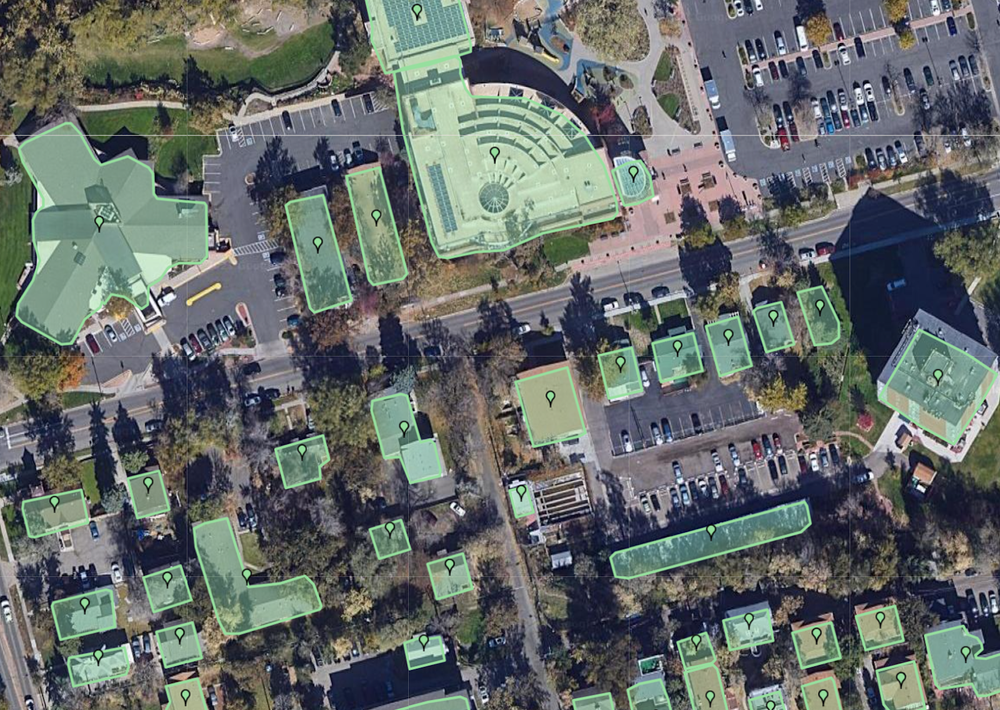
Single-feature AI model that classifies buildings.

Full-scene AI models that capture multiple categories of objects at once.
Once we have a model trained on a particular city, we can then expand it to other cities with similar urban designs. For example, the sidewalks, curbs, and traffic lights look similar in Atlanta and Ho Chi Minh City — despite being over 9,000 miles away. And the same model works in Madrid as it does in Dallas, something that may be hard to believe at first glance. With our new advanced machine learning techniques combined with our collection of high-definition imagery, we’re on track to bring a level of detail to the map at scale like never before.
AI will continue to play an important role as we build the most helpful map for people around the globe. For more behind-the-scenes looks at the technology that powers Google Maps, check out the rest of our Maps 101 blog series.
Maps 101
Google Maps helps you navigate, explore, and get things done every single day. In this series, we’ll take a look under the hood at how Google Maps uses technology to build helpful products—from using flocks of sheep and laser beams to gather high-definition imagery to predicting traffic jams that haven’t even happened yet.
A look at how we tackle fake and fraudulent contributed content
by Dan Pritchett on Feb.19, 2021, under 3D Models, Argentina, Australia, Brazil, California, Denmark, England, Germany, Google Earth News, Google Earth Tips, Google Sky, Google maps, Hawaii, Indonesia, Ireland, Italy, Japan, Kenya, Mexico, Natural Landmarks, Netherlands, Sightseeing, Street Views, USA
For many of us, Google Maps is the place we go for information about the world around us. We search for businesses, seek directions, check photos and read reviews.
One way Maps is kept accurate and reliable is through updates that everyday people add. Since we started accepting contributed content in 2010, more than 970 million people have updated Google Maps in the form of reviews, photos, ratings and factual information like addresses and business hours. These contributions allow Google Maps to keep up with the world constantly changing around us and also help people make more informed decisions.
Just as Google Maps is a reflection of the real-world, so are the people that contribute to it. The same neighbor who lends a hand could also be writing witty reviews of local restaurants. Unfortunately, the opposite is also true. Just as there are bad actors in the real-world, there are those who try to game Google Maps with inappropriate content — the vast majority of which is removed before you see it.
While much of our work to prevent inappropriate content is done behind the scenes, we wanted to share some detail about our investments and progress in keeping Google Maps reliable and trustworthy.
How we single out the bad actors
Bad actors try to mislead people through a variety of techniques, from fake reviews that attack a business to inauthentic ratings that boost a place’s reputation. Fighting this unhelpful content is a complex, ceaseless battle — one that we rarely detail publicly so as to not tip off scammers to our ever-changing techniques.
One of the best tools we have to fight back is an understanding of what normal, authentic Google Maps usage looks like. For example, we know that the average person is likely to use Google Maps while navigating a commute or road trip, and while searching for nearby restaurants or services. They’ll leave reviews at places they’ve been, and usually add ratings or photos in location-specific clusters.
Observations like these inform our machine learning algorithms, which scan millions of daily contributions. These algorithms detect and remove policy-violating content across a variety of languages, and also scan for signals of abnormal user activity. For instance, they can detect if a new Google Maps account in say, Bangkok, suddenly leaves bad car dealership reviews in Mexico City and 1-star restaurant ratings in Chicago. The policy-violating content is either removed by our automated models or flagged for further review, along with the user account.
We also deploy thousands of trained operators and analysts who help with content evaluations that might be difficult for algorithms, such as understanding reviews with local slang.
Who are the bad actors and how do we stop them?
Our teams and protections are built to fight two main types of bad actors: content fraudsters and content vandals.
Fraudsters, who are ultimately motivated by money, try to trick people with scams like fake reviews to attract customers or fake listings to generate business leads. To deter them, we preemptively remove opportunities for them to profit off of fake content.
For example, we have focused efforts on detecting content coming from click farms where fake reviews and ratings are being generated. Through better detection of click farm activity we are making it harder to post fake content cheaply, which ultimately makes it harder for a click farm to sell reviews and make money. And to catch fake business profiles before they appear on Maps, we've strengthened our Google My Business verification processes with new machine learning models that help identify fraudulent engagement. By fighting large-scale efforts to create fake business profiles, we’ve stymied millions of attempts from fraudsters aiming to steal customers from legitimate businesses by crowding them out of search results.
Then there are content vandals, who may be motivated by social and political events or simply want to leave their mark online. For example, they post fake reviews or edit the names of places to send a message, and they add off-topic photos as pranks.
Content vandalism can be more difficult to tackle as it’s often random. For instance, a teenager who posts an off-topic photo to their high school’s listing on Maps as a joke or someone who left profanity in a nonsensical review.
Impeding content vandals comes down to anticipation and quick reaction. As places become more prone to vandalism, we adjust our defenses. For instance, last year we quickly modified our algorithms to preemptively block racist reviews when we observed anti-Chinese xenophobia associated with COVID-19. To avoid the spread of election-related misinformation, we limited the ability for people to edit the phone numbers, addresses and other information for places like voting sites. And we restricted reviews for certain places where we saw higher rates of policy-violating content, like schools in the U.S.
Our progress in fighting unwelcome content
With the help of people and technology that closely monitor Maps 24/7, we’re able to take swift action against scammers, ranging from content removal and account suspension to litigation. In 2020 alone, we took the following actions to ensure the content you see in Google Maps is reliable:
- We blocked or removed 55 million policy-violating reviews and nearly 3 million fake Business Profiles. This is 20 million fewer reviews than we removed in 2019 as we saw a drop in the overall number of reviews due to fewer people being out and about during COVID-19.
- We took down more than 960,000 reviews and more than 300,000 Business Profiles that were reported to us by Google Maps users. This is an increase over 2019 largely due to increased use of automated moderation which complements the manual review of flagged content performed by operators and analysts.
- We reviewed and removed more than 160 million photos and 3.5 million videos that either violated our policies or were of low quality. For example, thanks to advancements in our automated systems, we’ve significantly improved our detection of photos that were extremely blurry. This has led to major improvements in the quality of photos on Maps - both new photos added and ones shared in years past. And as we more aggressively targeted bad actors overall, account removals could lead to deletion of all content left by one account, in some cases thousands of photos.
- Our technologies and teams disabled more than 610,000 user accounts after detecting and investigating suspicious or policy-violating behavior.
- We stopped more than 3 million attempts by bad actors to verify Business Profiles on Google that didn’t belong to them.
Content contributed by our users is an important part of how we continue to make Google Maps more helpful and accurate for everyone. As more people share their local knowledge on Google Maps, we’ll continue to invest in the policies, technologies and resources needed to make sure information is reliable.
How 15 years of mapping the world makes Search better
by Elizabeth Reid on Dec.05, 2020, under 3D Models, Argentina, Australia, Brazil, California, Denmark, England, Germany, Google Earth News, Google Earth Tips, Google Sky, Google maps, Hawaii, Indonesia, Ireland, Italy, Japan, Kenya, Mexico, Natural Landmarks, Netherlands, Sightseeing, Street Views, USA
Our Maps 101 series goes behind the scenes to share how we help you navigate, explore and get things done every single day. Over the past 15 years, we’ve provided maps in more than 220 countries and territories and now surface helpful information for more than 200 million places. These efforts bring helpful local information to your fingertips in Google Maps and produce better Google Search results, helping you connect with nearby places and businesses.
In fact, Search results that show local places and businesses now drive more than 4 billion connections between customers and businesses every month. This includes more than 2 billion monthly website clicks and other connections, such as phone calls, directions, food ordering and reservations.
Today, we’ll share more about the innovations and investments that help build an accurate and up-to-date understanding of places for the billions of people looking for local information on Search and Maps.
Maximizing Street View with breakthroughs in AI
Street View imagery lets you virtually explore the world, and helps us accurately reflect local information about places in Maps and Search. We’ve travelled more than 10 million miles across 87 countries to capture this imagery and bring new information online—from unmapped roads to new businesses.
Applying artificial intelligence to our more than 170 billion Street View images helps us create high-quality maps faster than we could before. For instance, applying machine learning models to Street View imagery has improved the accuracy of one-third of the addresses in Google Maps and Search, resulting in more reliable maps as people look for a local business or navigate to a destination.
Text recognition in the natural environment is challenging—especially at scale. The average Street View photo has visual distractions like distortions, cluttered backgrounds with extraneous text and awkward viewpoints. After years of teaching machine learning models, our text recognition systems can tune out these distractions and detect business names and addresses even when they're handwritten on the side of a building or abbreviated. These models can understand a variety of languages across various scripts too, from Latin, Cyrillic and Thai to Chinese, Japanese and Korean.
In the last few years alone, processing imagery with AI has been one of the important ways we’ve been able to add more than 10 billion edits to our library of places, providing people with updated phone numbers, business hours and locations as they use Maps and Search.
Building data partnerships with authoritative sources worldwide
Thanks to partnerships covering more than 10,000 local governments, municipal agencies and organizations around the world, we're able to reflect the latest information in Search and Maps results and help local authorities reach even more people in their communities with important updates. This includes everything from bike lanes and road closures to the addresses of hospitals and food banks. Our teams vet each authoritative data source to make sure it’s accurate before it appears on Search and Maps.
Working with authorities around the world also helps us quickly gather and surface critical information. This year, these partnerships made it possible to make important updates relevant to COVID-19. When you search for “COVID test” on Search and Maps we now show you more than 17,000 COVID-19 testing centers across 20 countries and all 50 U.S. states. You can also see important details like if appointments are required, who can get tested and if there’s drive-through testing.
These details are crucial and accuracy is key, which is why we lean on authoritative sources to help us surface this information in Maps and Search.
A global community contributes to make Search and Maps better
To ensure our products reflect the real world as fast as it changes, we enable people everywhere to contribute their local knowledge. Every day, people make millions of contributions to Google Maps, like reviews, photos, address updates and more. And we’re seeing more people contributing than ever before. In the past 3 years, the number of reviews, ratings and photos people have added to Google Maps more than doubled.
With local details from people in Maps and Search, it’s easier to make more informed decisions. You can quickly find reviews when looking for a mechanic, see photos others have added for a park you’d like to explore, and find your convenience store’s new hours.
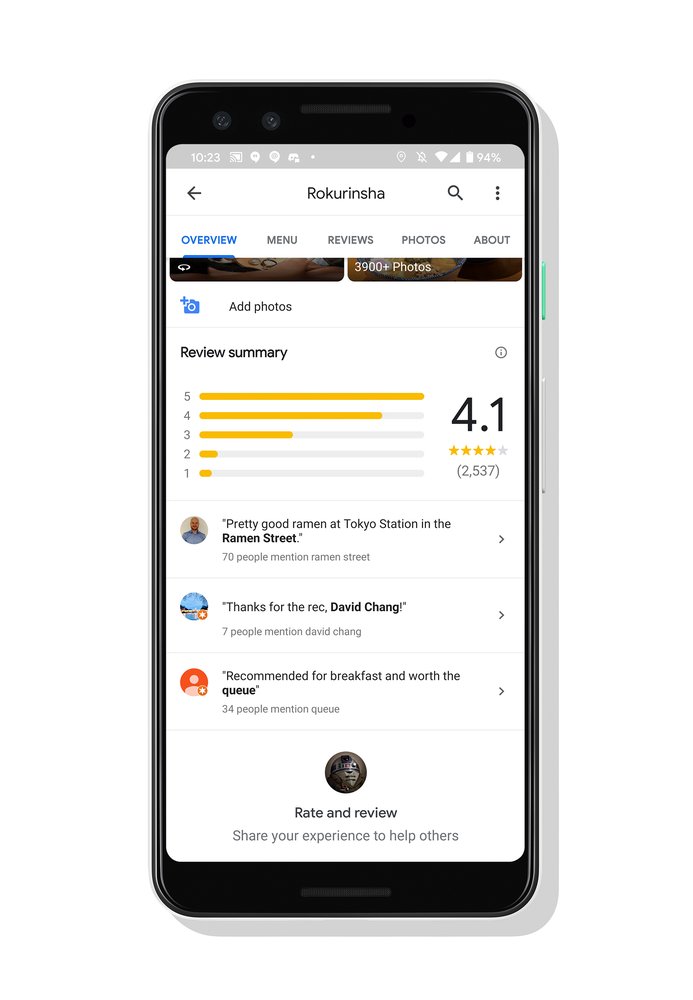
People’s reviews on Maps and Search make it easier to discover new places and learn about businesses nearby.
This year, as cities and countries instituted restrictions throughout the pandemic, many places temporarily closed or changed their operations. While businesses can indicate if they are open with their Google My Business listing, we’ve also made it easy for anyone to mark a business as open or temporarily closed on Search and Maps by simply suggesting an edit. Over the course of the pandemic, people have submitted millions of temporary closure and reopen reports, helping eliminate the uncertainty about which businesses are open and when.
Giving business owners free tools to connect with customers online
One of the most important ways we help local businesses succeed is by connecting them with customers online. Business owners can claim their free Business Profile and connect directly with customers across Search and Maps via phone calls, messages and reservations. They can also share accurate information about their business, including opening hours, services offered and contact information. And each month Google connects people with more than 120 million businesses that don't have websites, helping small business owners who aren’t online attract more customers.
Over the last five years, we’ve made more than a thousand improvements to Business Profiles, making it easier for merchants to connect with customers and share updates online. We recently made this even easier by adding new ways for merchants to view and update their Business Profile directly from Search and Maps.
With the pandemic causing daily disruptions worldwide, Google has helped businesses keep customers updated about everything from new services to adjusted store capacity and hours. Since the start of COVID-19, businesses made nearly 700 million edits to their Business Profiles, about double the number of changes made during the same time last year.
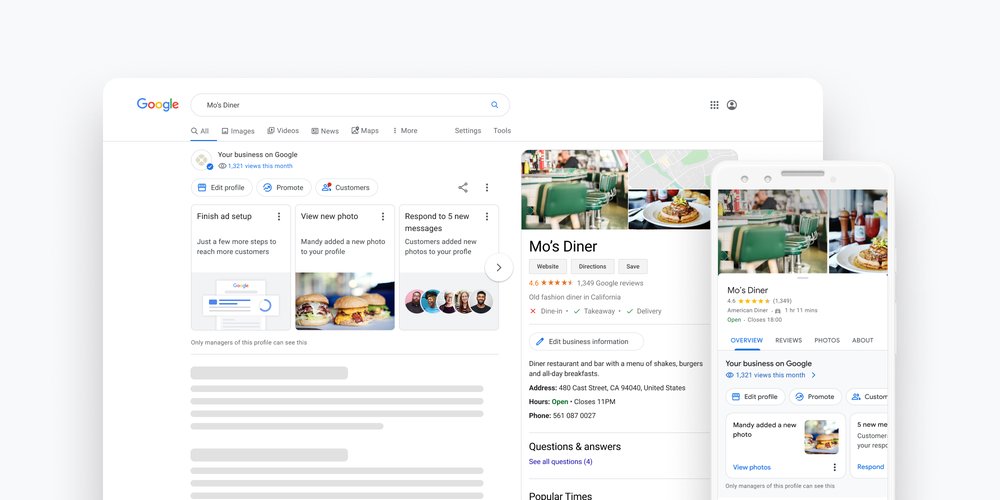
It’s easy for a business owner to update their Business Profile and engage with customers directly from Search and Maps.
Gathering local information in totally new ways
To help people find what they need in a world that changes by the minute, we’ve developed new ways to find and surface information.
For example, people tend to avoid crowded stores and long lines—and this has been especially true during the pandemic. Popular times and live busyness information help people see how busy a place tends to be at a specific time or at that very moment. Gone are the days of guessing the best time to go grocery shopping! We’re expanding live busyness information to millions of places globally and to include essential places like gas stations, grocery stores, laundromats and pharmacies.
Google’s conversational technology, Duplex, has helped us scale our ability to confirm updated information for places. Since the beginning of the pandemic, we’ve put Duplex to work making calls to businesses in eight countries—from New Zealand to the United States—to confirm things like opening hours or whether they offer takeout and delivery. This has helped us make millions of updates to business information that have been seen more than 20 billion times in Maps and Search.
Building the most helpful map of an infinitely detailed world
Beyond the technologies we’ve developed, our global operations teams play a role in nearly every aspect of mapmaking. They gather data, train machine learning models that help us index information from imagery, fix problems and evaluate authoritative data sources. They also build and maintain the automated systems that protect people from fake contributed content and even help small business owners set up Google My Business accounts.
All this to say, our work to organize the world's information and make it accessible and useful is never done. Given the pace of change, there’s never been a more important time for us to be helpful.


